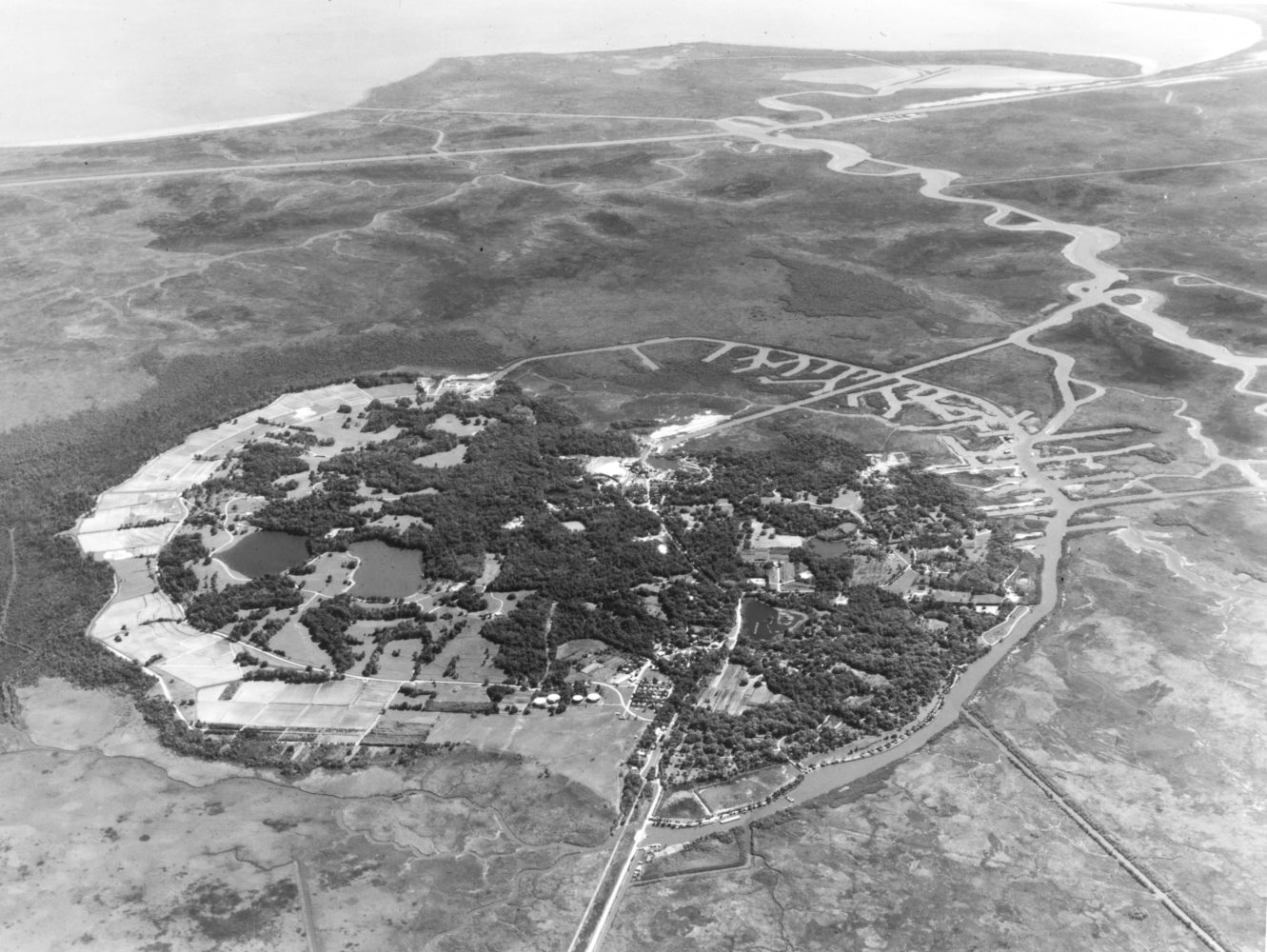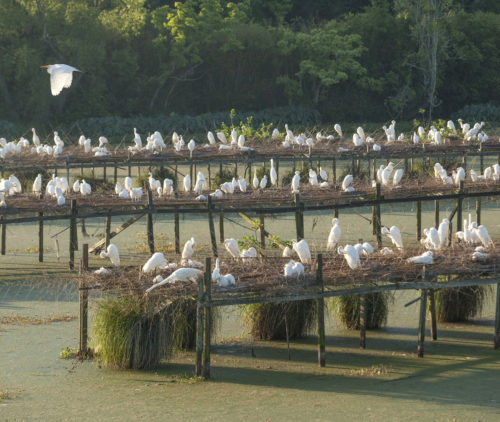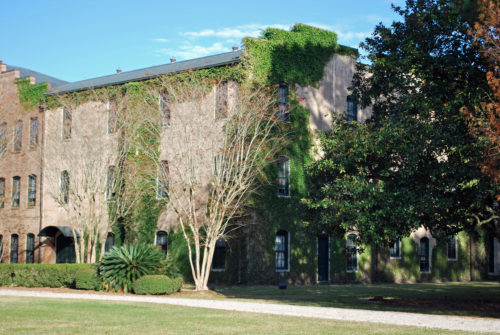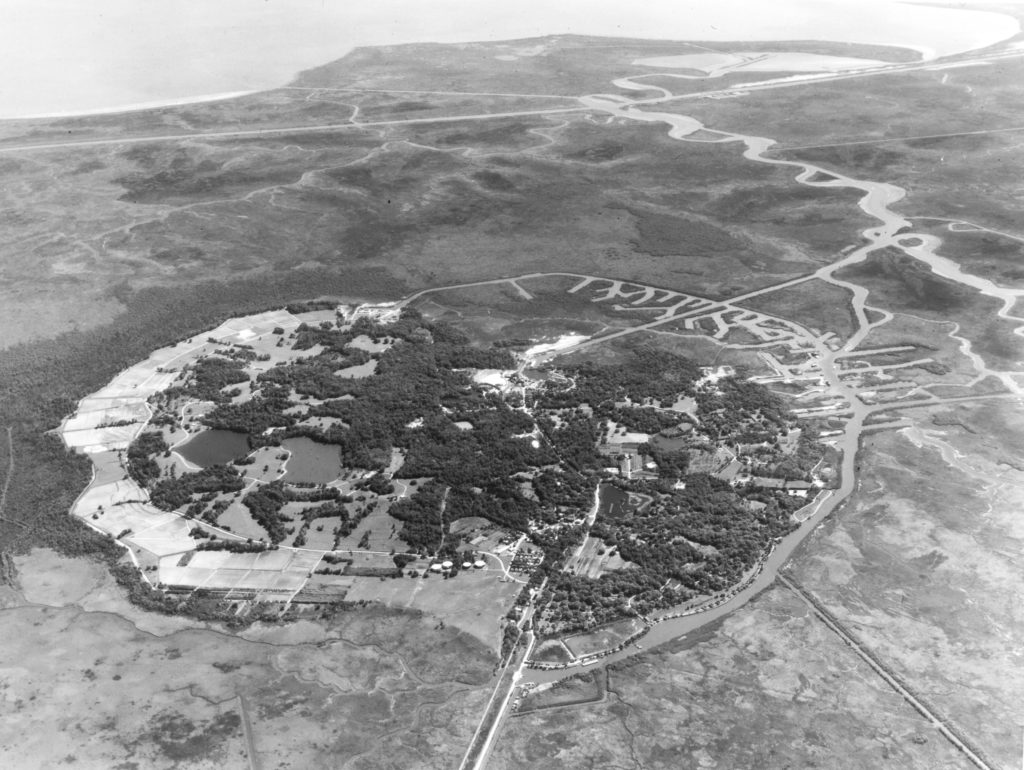Tabasco Sauce marks its 150th anniversary this year, and what better way to celebrate than to have its home, Avery Island, soon to be listed on the National Register of Historic Places. The island includes more than 100 buildings and 50 sites, many of which are archaeologically significant. Avery Island will be listed at all three levels of significance — local, state and national — and for all four criteria — history, association with significant individuals, architecture and archaeology. The following history was written by Shane K. Bernard, Avery Island’s historian and curator.
—Jessica Richardson
Avery Island is the largest of five salt domes along the Louisiana coast. It is the home of the interrelated Avery and McIlhenny families, as well as the Jungle Gardens, a 170-acre semitropical estate open to the public since 1935, and McIlhenny Company, maker of Tabasco brand products for more than 140 years.
A geologic oddity, Avery Island rises dramatically from low, flat wetlands to a height of 163 feet above mean sea level — making it the highest point on the Gulf Coast. The island is approximately 2,200 acres in area and about three miles in diameter at its widest point.
The island’s primary industries are oil production (since 1942); salt mining (since 1862); the manufacture of Tabasco brand products; and tourism, driven by public access to the Tabasco factory and Jungle Gardens. At various times during the early 20th century, the island produced sand, gravel and lumber, as well as canned shrimp, oysters, fruit and vegetables. Fur trapping in the nearby salt marsh once played a vital role in the local economy. Sugarcane production remained a major industry on the island until around 1925, when the Averys no longer found the crop commercially viable.
- Bird City at Avery Island was created by E.A. “Ned” McIlhenny in the 1890s. Image courtesy of Shane Bernard, Avery Island Archives
- The Second Tabasco Factory was built in 1905 and served as the only Tabasco factory until 1980. Image courtesy of Shane Bernard, Avery Island Archives
Avery Island formed over millions of years as a buoyant subterranean plume of solid rock salt pushed up the Earth’s surface. Fossil records indicate that about 10,000 years ago the island’s briny spring water attracted a variety of now-extinct animal species. These “megafauna” creatures included mastodons, saber-toothed tigers, dire wolves and giant sloths, among others. Although humans may have first visited the island at that time — attracted not only by its salty springs, but by the ample game — radio-carbon dating suggests that Native Americans lived on the island by 2,500 BC. Other “pre-tribal” Native Americans subsequently came to the island to extract salt from its springs through boiling. Thousands of clay pottery shards collected around the island reflect the scope of this industry.
Europeans encountered Avery Island as early as 1779, when French explorers employed by Louisiana’s Spanish administrators described a “so-called isle” near Bayou Petite Anse (meaning “Little Cove” in Louisiana French). The island itself soon became known as “Ile Petite Anse”or “Petite Anse Island,” though for a short time around 1800 it bore the names “Isla Cuarin” and “Côte de Coiron.” These latter names alluded to the island’s earliest known owner, Dr. Cuarin or Coiron, who claimed the island in the late 1700s.
In 1818, New Jersey native John Craig Marsh purchased a share of the island and began to plant sugarcane on it. In the early 1850s, Marsh sold his plantation to his son, George Marsh, and to his two sons-in-law, Ashbel Burnham Henshaw and Baton Rouge jurist D.D. Avery, the latter of whom soon came into possession of his brothers-in-law’s shares.
During the Civil War, Confederate troops under Gen. Richard Taylor defended the island’s mines, which provided salt to several states of the lower south. In November 1862, the Union unsuccessfully attacked the island by water using two gunboats and a transport ship. Federal troops finally captured the island by land in April 1863, destroying some mining equipment and outbuildings. Except for two of Avery’s sons who served as Confederate army officers, the Avery and McIlhenny families fled to Texas for the remainder of the conflict.
Aerial image of Avery Island in 1976. Image from the Avery Island Archives.
After the war, the Averys and McIlhennys returned to the island, and in 1868, D.D. Avery bought out the last of the early landholders — making Avery the island’s sole owner. On his death in 1879, ownership passed to Avery’s five children. In 1903, the surviving Avery siblings organized their plantation into a modern corporation, dubbed the Avery Planting and Improvement Company. In 1924, this entity became the Petit Anse [sic] Company, which in turn became Avery Island Inc. in 1948.
Avid conservationists, the McIlhennys’ branch of the Avery family adopted the motto, “Man and Environment in Balance,” in 1971. Their environmental efforts, however, actually extend back to around 1895, when E.A. McIlhenny founded a private wildfowl refuge on the island. This refuge still exists in Jungle Gardens, and annually it attracts tens of thousands of birds (primarily egrets).
Avery Island Inc. continues to control the island’s surface and mineral rights. Present-day shareholders are required by corporate charter to be direct descendants of D.D. Avery — the man for whom Petite Anse Island was renamed in the late 19th century.
For more on Avery Island, check out the full nomination in the National Register Database and visit TABASCO.com.
This story appeared in the September issue of the PRC’s Preservation in Print magazine. Interested in getting more preservation stories like this delivered to your door each month? Become a member of the PRC for a subscription!










